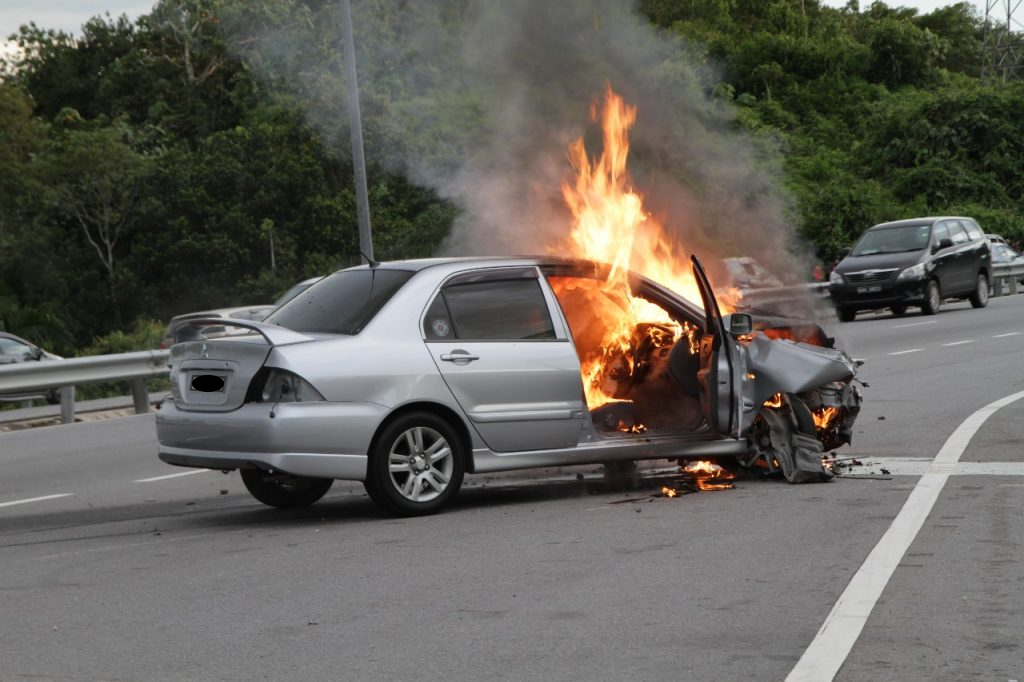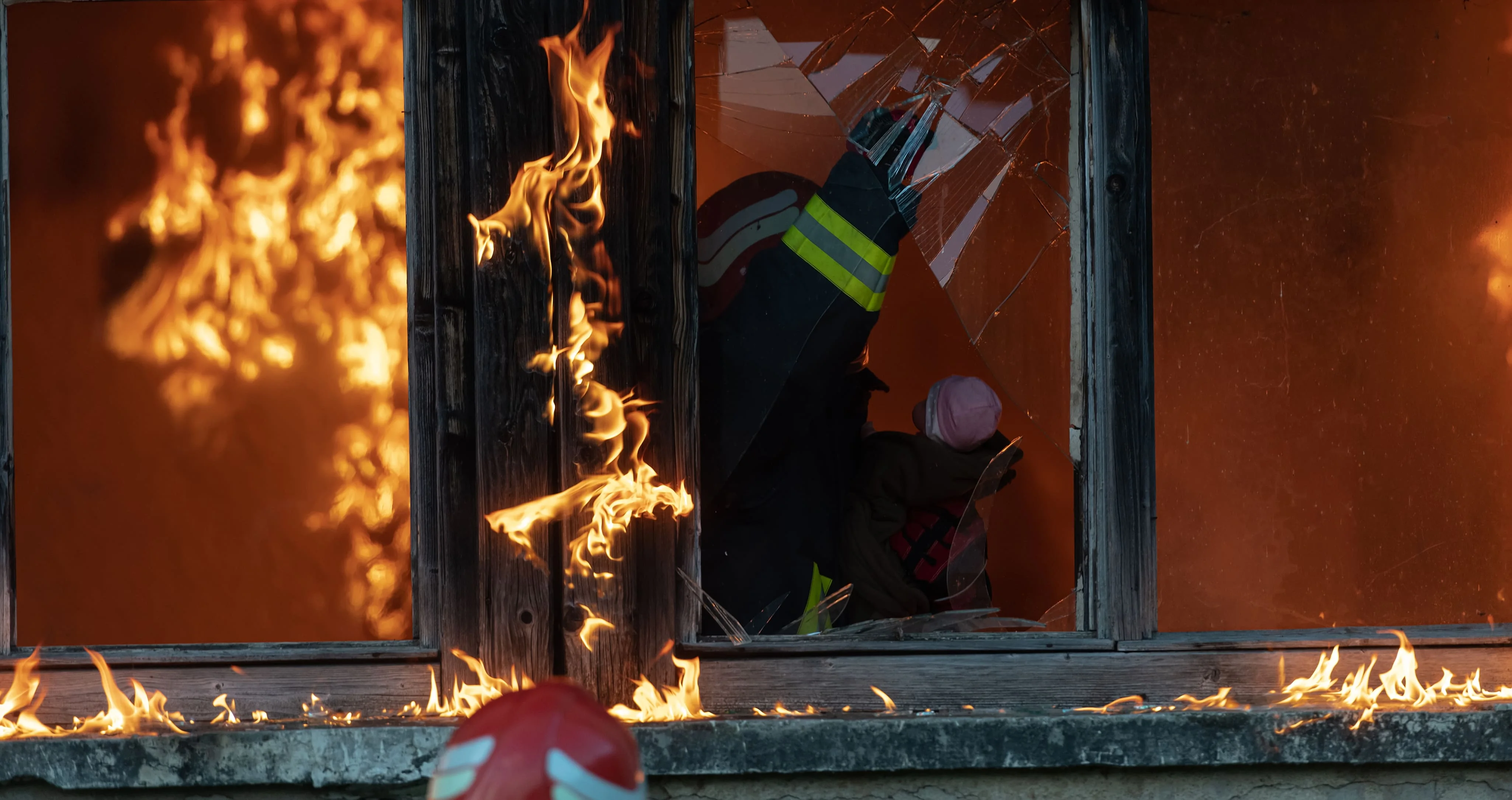The Step-by-Step Process of Vehicle Fire Investigation: A Detailed Guide by a IAAI-CFI(V)


Understanding Vehicle Fire Investigation
Vehicle fire investigations are intricate processes that demand a high level of expertise and precision. A Certified Vehicle Fire Investigator (IAAI-CFI(V)) plays a critical role in meticulously uncovering the cause of vehicular fires. Such professionals are equipped with specialized knowledge, as offered in the IAAI-CFI certification program, ensuring a systematic and thorough approach to investigation. To aid these experts, Blazestack's fire investigation platform emerges as an indispensable tool, streamlining the collection of fire scene data and fostering the generation of detailed reports, thereby enhancing the accuracy and efficiency of the investigative process.
Initial Assessment: First Response and Scene Safety
Ensuring the safety of the fire scene is paramount during the initial assessment by Certified Vehicle Fire Investigators (IAAI-CFI(V)). Upon arrival, investigators follow a rigorous first response protocol, which includes donning personal protective equipment and securing the area to prevent further incidents. Recognizing the hazardous nature of fire scenes, investigators adhere to the standards set by NFPA 1321 to manage risks effectively. This includes handling hazardous materials with care and ensuring that the investigation is conducted without compromising the safety of personnel or bystanders. In addition, the company's advanced software tools aid in the documentation and analysis of the fire scene, streamlining the initial phase of the investigation. Proper evidence collection and storage are facilitated by these digital solutions, in compliance with NFPA 1033 and NFPA 921 guidelines, ensuring a thorough and systematic approach to vehicle fire investigation and arson investigation.
Documentation: From Photos to Evidence Tagging
The documentation process in vehicle fire investigation is a meticulous task that requires attention to detail and precision. This step involves capturing photographic evidence from various angles to preserve the scene's condition before any disturbance. Investigators also sketch the scene to map out the location of the vehicle, surrounding environment, and any physical evidence. Each piece of evidence is then tagged with a unique identifier for traceability and future analysis. Utilizing platforms like Blazestack, fire investigators can enhance the accuracy and efficiency of this critical step. Blazestack offers an advanced fire investigation case management platform that supports investigators in logging, documenting, and reporting their findings coherently. The software's interface is designed for ease of use, making the documentation process accessible and streamlined for Certified Vehicle Fire Investigators (IAAI-CFI(V)I).
Evidence Collection: Techniques and Types
Effective evidence collection is a cornerstone of any vehicle fire investigation. Investigators employ a variety of techniques to gather crucial samples from the charred remains of a vehicle. This may include collecting residues, capturing images of burn patterns, and seizing mechanical and electrical components for analysis. The types of evidence range from physical fragments to chemical traces that could indicate the presence of accelerants. To streamline this intricate process, Fire Investigation Units (FIU) leverage platforms like Blazestack, a case management solution tailored to their needs. Blazestack facilitates a comprehensive and methodical approach to evidence collection, ensuring that nothing is overlooked. It automates tedious tasks, manages vast quantities of data, and supports thorough investigations—improving the accuracy and efficiency of fire investigations. For further assistance or to see Blazestack in action, schedule a free demo or call (855) 735-6673.
Analysis: Interpreting the Clues
During the analysis phase of a vehicle fire investigation, interpreting the burn patterns, evidence, and laboratory results is crucial. Sophisticated fire investigation case management software plays a pivotal role in correlating diverse data sets, allowing investigators to draw precise conclusions. Tools provided by platforms such as Blazestack enable experts to meticulously document their findings and maintain a clear chain of custody for all collected evidence. The ability to integrate photos, videos, and notes within a centralized system streamlines the process and enhances collaboration among investigative teams. Certified Fire Investigators (CFI), especially those with the esteemed IAAI-CFI designation, leverage these tools to uphold the highest standards of professional excellence while investigating complex fire scenes. Their expertise, complemented by advanced software, ensures that every clue is thoroughly analyzed, leading to the accurate determination of a fire's origin and cause investigations.
Leveraging Technology for Accurate Fire Investigations
In the intricate process of vehicle fire investigation, every step, from the initial assessment to the determination of origin and cause, is crucial. By embracing advanced technology and utilizing a dedicated fire investigation platform, professionals can ensure the accuracy and efficiency of their investigations. The Fire Investigation Case Management and Origin & Cause Software is a tool that investigators can rely on for comprehensive case management, allowing for meticulous logging, documenting, and reporting. This platform streamlines the investigative process, making it an indispensable resource for Certified Vehicle Fire Investigators (IAAI-CFI(V)). For a more streamlined case workflow, consider this platform's capabilities, and contact us for a free demo or additional information.
What exactly is a Certified Vehicle Fire Investigator (IAAI-CFI(V))?
A Certified Vehicle Fire Investigator (IAAI-CFI(V)) is a professional who has received specialized training and certification in determining the origin and cause of vehicle fires. They often have a background in firefighting, engineering, or law enforcement, and use their expertise to investigate incidents thoroughly, following a systematic process to identify the fire's cause.
What is the first step in a vehicle fire investigation?
The first step in a vehicle fire cause and analysis investigation is securing the scene to ensure it's safe for investigators. This is followed by documenting the scene through photographs and notes, which is crucial for preserving evidence that could be vital in identifying the fire's origin and cause.
How important is the role of technology in vehicle fire investigations?
Technology plays a critical role in vehicle fire investigations. Modern tools such as digital forensics, fire investigation software, and 3D imaging can provide detailed insights and help investigators analyze fire patterns, electrical systems, and fuel sources, leading to more accurate conclusions. For more information on the latest technology in fire investigations, visit our fire investigation platform page.
Can vehicle fires be caused by manufacturer defects?
Yes, vehicle fires can be caused by manufacturer defects such as electrical issues or mechanical malfunctions. A IAAI-CFI(V) will carefully examine vehicle components, recall databases, and maintenance records to determine if a defect could have contributed to the fire.
Are vehicle owners allowed to be present during the investigation?
Vehicle owners may be asked to provide information but are generally not present during the physical investigation for safety reasons and to preserve the integrity of the investigation. However, they can be kept informed about the investigation process and findings. For further guidelines, check our guide for vehicle owners.
What happens after the investigation is complete?
Upon completion of the investigation, the IAAI-CFI(V) compiles a comprehensive report detailing the findings, which can be used for insurance claims, legal proceedings, or to help with vehicle fire prevention. This report includes the cause of the fire, contributing factors, and any recommendations for safety improvements.
Trusted by Public and Private Investigator Teams Everywhere
Whether you're a big state agency, a small local fire department or somewhere in between, Blazestack software (NFPA 921® & CJIS compliant) collects fire scene data and generates standardized origin and cause reports in a fraction of the time of other methods.
To learn more about Blazestack, give us a call at (866) 303-4344 or email us at support@blazestack.com
Get Your Free 14-Day Trial and Custom Price Quote Now
We'll let Blazestack do the talking. Try it out right now for free.
A member of our staff will be in touch shortly.


